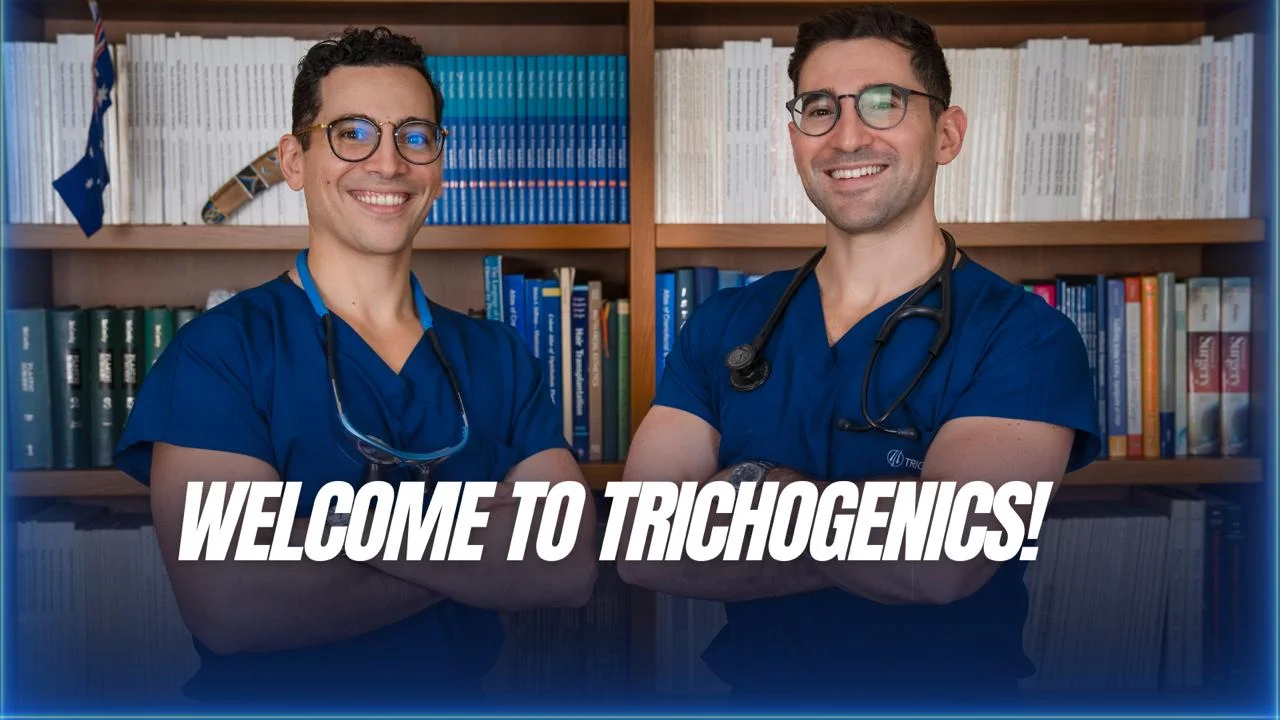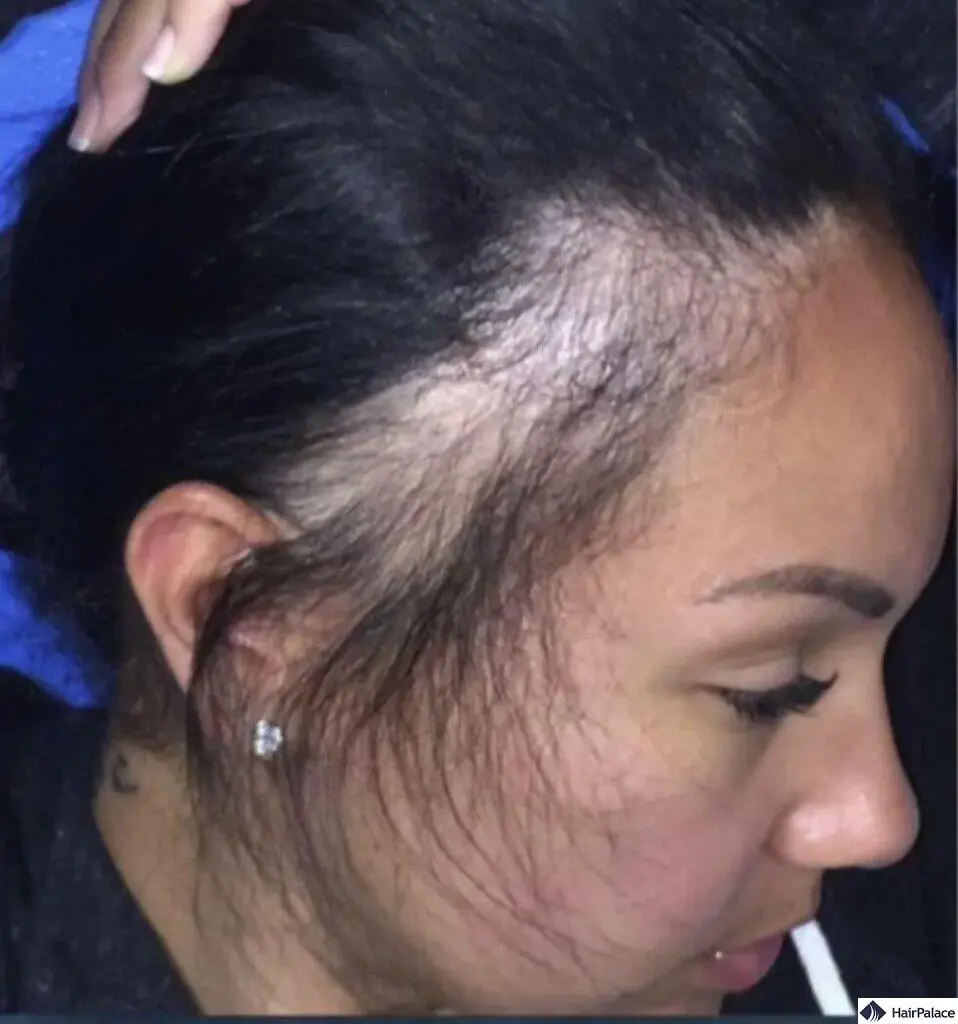A traction alopecia hair transplant helps people grow back their natural hair. This is for those who have pulled or put tension on their scalp for years. At Trichogenics, Dr. Asi Peretz and Dr. Eric Peretz founded the company, and doctors perform every procedure, not technicians. Our clinics in Greece and Israel use advanced medical techniques for safe and lasting hair restoration.
Key Takeaways
- A traction alopecia hair transplant is the best option for restoring hair lost from years of tension or tight hairstyles once natural recovery is no longer possible.
- At Trichogenics in Greece and Israel, every procedure is doctor-performed by Dr. Asi Peretz and Dr. Eric Peretz, ensuring medical safety and lasting results.
- Advanced methods like follicular unit transplantation (FUT) and FUE provide natural-looking growth, even in areas with permanent damage.
- Choosing regulated countries such as Greece or Israel is safer than traveling to Turkey, where many clinics operate without proper supervision.
- Proper post-surgery care and avoiding tight styles or chemical treatments help maintain results and protect new hair growth.
Understanding Traction Alopecia Hair Loss
@trichogenics How to treat, and most importantly prevent traction alopecia. #trichogenics #hairloss #tractionalopecia #hairtransplant #hairtransplantturkey
♬ original sound - Trichogenics
Traction alopecia happens when the hair is pulled too tightly for a long time. This often comes from wearing tight hairstyles such as braids, ponytails, or weaves. Constant tension creates stress on the hair follicles, leading to damaged hair and permanent hair loss in the affected areas.
Early signs include receding hairlines, small bald patches, or soreness on the scalp.
The skin may look shiny or irritated where the hair was pulled the most. Recognizing these changes early gives a better chance to restore hair before damage becomes permanent.
Can Your Hair Recover Naturally?
In some cases, traction alopecia can improve once you reduce the stress on your scalp. If the pulling has not caused deep follicle damage, hair may regrow naturally over time.
Small changes in your daily routine can help the scalp heal and stimulate healthy growth.
Here are a few practical steps that can support recovery in mild cases:
- Stop wearing tight hairstyles. Choose loose ponytails or protective styles that don’t pull on the scalp.
- Avoid heavy hair extensions or weaves. They add extra weight and increase tension on fragile areas.
- Massage your scalp gently. This improves blood flow and encourages the follicles to recover.
- Use mild, nourishing shampoos. Gentle products prevent irritation and protect new growth.
- Limit chemical treatments. Relaxers, dyes, and straighteners can weaken already stressed follicles.
- Maintain a balanced diet. Nutrients like biotin, iron, and zinc help strengthen hair from within.
If these measures don’t lead to improvement after several months, it may mean that the follicles are permanently damaged.
In such advanced cases, where scar tissue blocks natural regrowth, a hair transplant for traction alopecia hair growth becomes the most effective and lasting solution.
At this stage, professional evaluation from a doctor—like Dr. Asi Peretz at Trichogenics—is essential to determine the right treatment plan.
Hair Transplant for Traction Alopecia: Candidacy, Procedure, and Recovery
When a Transplant Is the Right Option
A traction alopecia hair transplant is suitable for people whose hair loss is permanent and stable. Before surgery, the doctor checks the donor areas—parts of the scalp where hair still grows well.
Good candidates have healthy donor hair and a clear type of hair loss that will not continue to spread.
When choosing a clinic, patients should focus on safety and medical quality. Many people travel abroad, especially to Turkey, for cheaper prices. But this is risky.
Turkey has many unregulated clinics, and in many cases, procedures are done by technicians, not doctors. This can lead to infections, scars, or poor results.
In Greece and Israel, Trichogenics follows strict medical rules and doctor-only procedures, ensuring safe and professional care.
How FUE and FUT Techniques Work
At Trichogenics, every traction alopecia hair transplant surgery is performed by Dr. Asi Peretz or Dr. Eric Peretz. They use two main techniques: FUE (Follicular Unit Extraction) and FUT (Follicular Unit Transplantation).
- FUE removes single hair units from the donor area and places them in thinning spots. It heals quickly and leaves almost no visible marks.
- FUT removes a small strip of scalp from the donor area and divides it into tiny grafts. This is best for people who need more coverage.
Both methods provide natural-looking results. The choice depends on each patient’s scalp, donor areas, and type of hair loss.
@trichogenics What is the difference between FUE and FUT hair transplants? What method of hair transplant is best? Dr Asi Peretz explains #trichogenics #hairtransplant #hairtransplantsurgery #hairtransplantturkey #hairtransplantgreece #hairtransplantcolombia #FUE #fue #fut #fuehairtransplant #futhairtransplant #hairloss #hairfall #hairlosssolutions
♬ original sound - Trichogenics
Success Rate and Healing Timeline
Because every hair transplant traction alopecia procedure at Trichogenics is performed by experienced doctors, results are consistent, safe, and long-lasting.
Most patients begin to notice new hair growth around three months after surgery, with full results appearing within 9 to 12 months.
After surgery, mild swelling or redness can appear but usually fades within a few days. To help the new follicles grow healthy and strong, patients should follow simple post-care steps:
- Avoid chemical treatments. Do not dye, bleach, or straighten your hair for at least one month after surgery.
- Skip tight hairstyles. Avoid ponytails, braids, or buns that put tension on the healing areas.
- Keep the scalp clean and dry. Wash gently with a mild shampoo recommended by your doctor.
- Do not scratch or rub the scalp. Touching or rubbing can dislodge the new grafts.
- Sleep with your head elevated. This helps reduce swelling in the first few days.
- Protect your scalp from the sun. Wear a loose hat or stay in shaded areas during recovery.
Following these steps prevents further damaged hair, protects the transplanted follicles, and ensures lasting, natural results.
Alopecia Types and Treatment Results
Difference Between Traction Alopecia and Alopecia Areata
It’s important to know that traction alopecia and alopecia areata are different. Traction alopecia happens from pulling the hair too much, while alopecia areata is caused by the immune system attacking the follicles.
A hair transplant for traction alopecia works well because the scalp around the bald area is usually healthy. But in alopecia areata, surgery is not always possible until the condition is stable.
Doctors first treat the immune problem before thinking about transplant options.
Will a Hair Transplant Work for Other Types of Alopecia?
Hair transplants can treat several types of hair loss, such as traction alopecia or pattern baldness. They are less effective for conditions that are still active or involve inflammation.
A detailed consultation with a qualified doctor helps decide if surgery is the best choice.
In advanced cases, Dr. Asi Peretz uses careful planning and precision to rebuild the natural hairline, especially in areas like the temples where traction damage is most visible.
With proper care, results are long term, natural, and confidence-boosting.
Why Choose Trichogenics
Doctor-Performed Procedures by Dr. Asi and Dr. Eric Peretz
At Trichogenics, only doctors perform surgery—never assistants or untrained staff. Dr. Asi Peretz and Dr. Eric Peretz have years of experience in hair restoration, ensuring the highest medical standards.
Each treatment starts with a detailed scalp check and discussion about goals, donor areas, and expectations. The doctors design a personalized plan to restore hair naturally and safely.
Clinics in Greece and Israel Ensuring Medical Safety
Trichogenics operates in Greece and Israel, where the medical system is highly regulated and safe. Each procedure follows international health standards. Patients receive close medical supervision before, during, and after surgery.

Many people choose Turkey for cheaper treatments, but this is a serious mistake. Many clinics there lack proper licensing, medical oversight, or hygiene. Patients often face poor results or serious complications. Choosing Trichogenics in Greece or Israel means choosing real doctors, proper facilities, and proven hair transplant procedures that protect your health and deliver lasting results.
Start Your Hair Restoration Journey with Trichogenics
A traction alopecia hair transplant can restore both your hair and your confidence. Years of wearing tight styles, chemical treatments, or hair extensions can lead to permanent hair loss, but modern surgery offers a safe solution.
At Trichogenics, every operation is handled personally by Dr. Asi Peretz and Dr. Eric Peretz. They use advanced FUE and FUT methods to achieve strong, natural growth. With clinics in Greece and Israel, patients receive care that is safe, ethical, and doctor-led.
Avoid the risks of unregulated clinics abroad—especially in Turkey, where many procedures are done without medical oversight.
Choose Trichogenics for trusted care, lasting results, and a modern approach to hair restoration that truly helps you regain healthy, natural hair.



